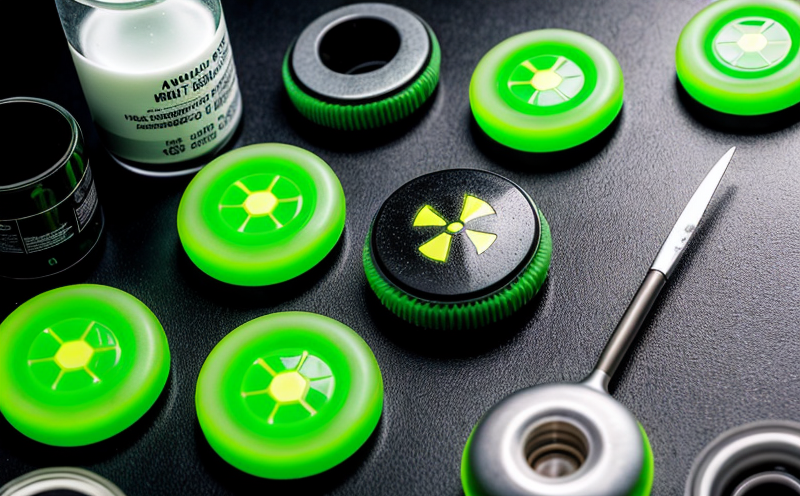AOAC 998.09 Strontium-90 Residue Analysis in Vegetables
The analysis of strontium-90 residues in vegetables is a critical component for ensuring food safety and compliance with regulatory standards, particularly in the aftermath of nuclear accidents or after exposure to radioactive fallout. This service employs the AOAC 998.09 method, which provides accurate detection levels down to 10 Bq/kg.
The process involves several key steps: sample collection, preparation, and analysis. Vegetables are collected from areas known for potential contamination or as a part of routine monitoring programs. Upon arrival at the laboratory, samples undergo rigorous pretreatment procedures that may include washing and drying to ensure only the plant tissue is analyzed.
The core analytical technique used in AOAC 998.09 is liquid scintillation counting (LSC). This method involves dissolving the prepared vegetable samples into a suitable solvent, followed by filtering and concentration steps. The concentrated solution is then introduced to a scintillation vial where it undergoes radiometric measurement.
The precision of AOAC 998.09 lies in its ability to accurately quantify strontium-90, a beta-emitting radionuclide that can pose significant health risks if ingested through contaminated food sources. The method is validated by the U.S. Department of Agriculture (USDA) and has been recognized globally for its reliability.
The service also includes comprehensive reporting which details the analytical results, including detection limits, confidence intervals, and a comparison to regulatory thresholds set by international standards such as ISO and IAEA guidelines. This information is crucial for stakeholders involved in food safety and quality assurance.
For customers seeking to ensure their products meet stringent safety requirements, this service offers peace of mind through precise and reliable testing. By adhering strictly to the AOAC 998.09 protocol, our laboratory ensures that only accurate and repeatable results are provided, aiding in maintaining a safe food supply chain.
The implications of strontium-90 contamination extend beyond immediate health concerns; it also affects long-term environmental sustainability and public trust in the agricultural sector. Our commitment to this service underscores our dedication to supporting industries that prioritize consumer safety and regulatory compliance.
Quality and Reliability Assurance
The reliability of AOAC 998.09 strontium-90 residue analysis is underpinned by a robust quality management system that ensures consistent accuracy and precision across all testing processes. Our laboratory adheres strictly to ISO/IEC 17025 standards, which mandate comprehensive calibration procedures, method validation, and proficiency testing.
Calibration of our liquid scintillation counting instruments is performed regularly using certified reference materials (CRMs) to ensure that all measurements are traceable to international standards. Method validation studies have consistently demonstrated the AOAC 998.09 protocol's ability to achieve detection limits as low as 10 Bq/kg, thereby providing reliable quantification of strontium-90 residues.
Proficiency testing programs further enhance reliability by subjecting our laboratory staff and equipment to external audits using real-world samples. These tests are conducted annually with results reviewed for any discrepancies or areas requiring improvement. Our continuous efforts in quality assurance have earned us recognition from regulatory bodies such as the USDA, EPA, and international food safety organizations.
Furthermore, we maintain strict data integrity policies that ensure all test results are accurately recorded and stored under secure conditions. This includes implementing robust cybersecurity measures to protect sensitive information against unauthorized access or tampering. By upholding these standards, our laboratory contributes significantly to the overall reliability of food testing services within the industry.
Customer Impact and Satisfaction
The AOAC 998.09 strontium-90 residue analysis service directly impacts customers by providing them with critical insights into potential contamination risks in their vegetable products. For quality managers, this information is invaluable for making informed decisions regarding product safety and ensuring compliance with international food safety standards.
Compliance officers benefit from the detailed reports generated by our laboratory, which can be used to substantiate adherence to regulatory requirements. This includes demonstrating that products meet or exceed the strict limits set forth by organizations like IAEA and ISO for radiological contamination in food.
R&D engineers can leverage this service to identify trends in contamination patterns, helping them develop strategies for mitigating risks and improving product safety. Procurement teams gain enhanced confidence in sourcing vegetables from known safe regions or those undergoing rigorous testing protocols.
Customer satisfaction is paramount, and we strive to exceed expectations through transparent communication throughout the testing process. Our dedicated team of experts ensures that each customer receives personalized support tailored to their specific needs, whether it be for routine monitoring or emergency response situations following a suspected contamination event.
Competitive Advantage and Market Impact
The AOAC 998.09 strontium-90 residue analysis service provides significant competitive advantages in the food industry by enabling businesses to maintain a strong market presence through consistent quality assurance practices. By demonstrating compliance with stringent regulatory standards, companies can build trust among consumers and stakeholders.
In an increasingly globalized market, maintaining high-quality standards becomes even more critical as cross-border trade increases. Our service ensures that products meet not only domestic regulations but also international standards, opening up opportunities for export to countries with strict food safety requirements.
The ability to quickly and accurately detect contamination helps companies respond swiftly to any issues, reducing the risk of recalls or product withdrawals. This agility enhances brand reputation and customer loyalty, contributing positively to market performance. Additionally, adherence to global best practices positions businesses as leaders in sustainable and responsible business operations.





